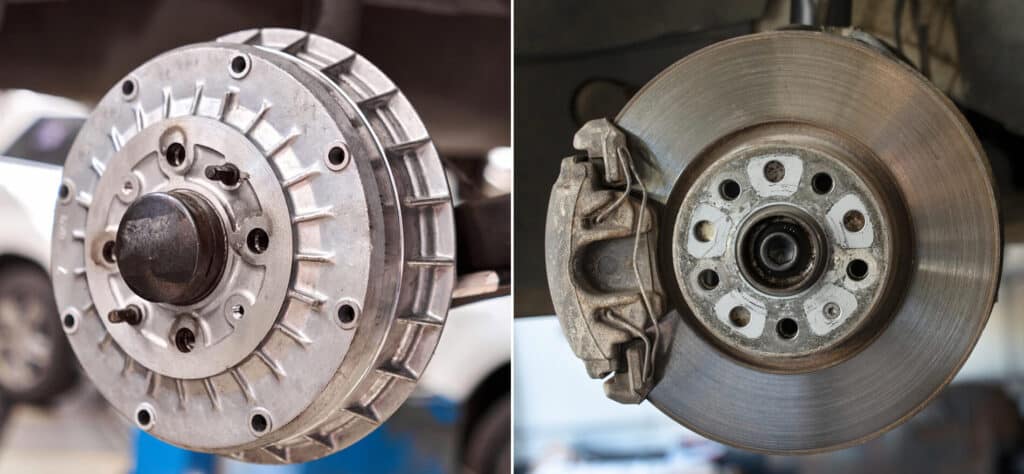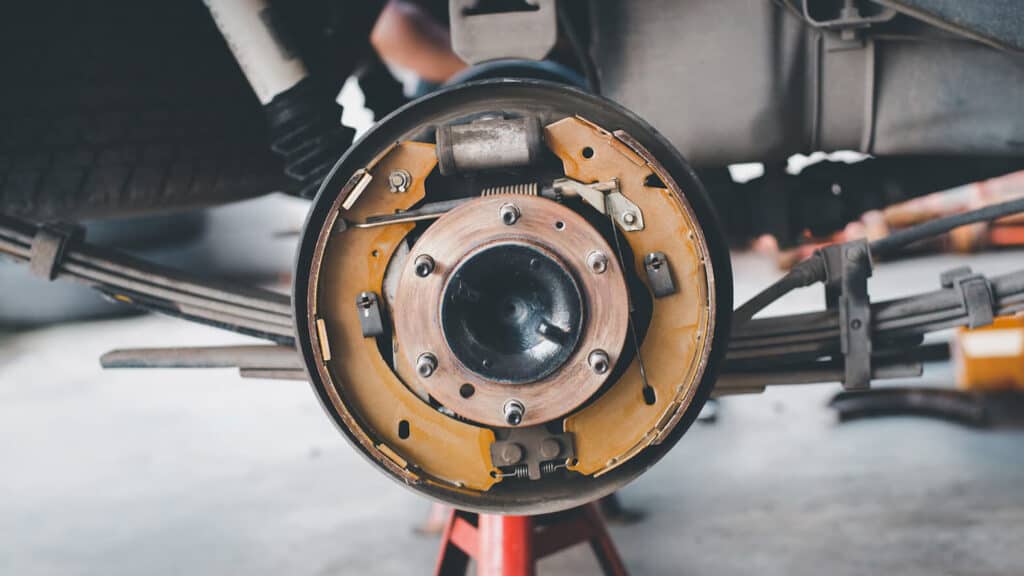Understanding the Role of Brake Drums in Vehicle Braking
Brake drums play a vital role in ensuring the safe and efficient operation of a vehicle’s braking system. Primarily found in older vehicles and sometimes in the rear brakes of modern cars, drum brakes have a long history in the automotive world. This article will explore the workings of brake drums, their advantages and disadvantages, maintenance tips, and their relevance in today’s vehicles. Let’s dive into the ins and outs of brake drums and demystify their role in vehicle braking.
The Anatomy of a Drum Brake System: Key Components and Functionality
A drum brake system consists of several key components, including the brake drum, brake shoes, wheel cylinder, and various springs and hardware. The brake drum is a cylindrical, hollow component that rotates with the wheel. When the brake pedal is pressed, hydraulic pressure forces the wheel cylinder to push the brake shoes against the inner surface of the drum. The friction generated by this contact slows down the vehicle. Once the brake pedal is released, springs pull the brake shoes away from the drum, allowing the wheel to rotate freely again.

Drum Brakes vs. Disc Brakes: A Comprehensive Comparison
While both drum and disc brakes serve the same purpose of slowing down a vehicle, they differ in design, performance, and maintenance requirements. Drum brakes use brake shoes and a drum to generate friction, while disc brakes employ brake pads and a rotor. Disc brakes are generally considered superior in terms of stopping power and heat dissipation, which can lead to better overall braking performance. Drum brakes, on the other hand, are typically less expensive and simpler in design, making them a cost-effective option for some applications.
Advantages and Disadvantages of Drum Brake Systems
Drum brakes offer several advantages, including lower production and maintenance costs, self-energizing action that can lead to less pedal effort, and a compact design that can save space in the wheel well. However, they also have some disadvantages, such as reduced heat dissipation, which can lead to brake fade during prolonged use. Additionally, drum brakes are generally less effective in wet conditions, as water can accumulate inside the drum and compromise braking performance.
The History and Evolution of Drum Brakes in the Automotive Industry
Drum brakes have been around since the early days of the automotive industry, with the first patent for a drum brake system filed in 1902. They were the standard braking system for many decades, but the introduction of disc brakes in the 1950s began to shift the balance. Over the years, improvements in materials, design, and manufacturing techniques have allowed drum brakes to remain competitive in certain applications, particularly for rear brakes and on smaller, budget-oriented vehicles.
Common Drum Brake Issues and Troubleshooting Tips
Like any mechanical system, drum brakes can encounter problems over time. Some common issues include:
1. Worn or damaged brake shoes: Inspect the brake shoes for wear or damage and replace them if necessary.
2. Warped or grooved drums: Examine the drum for signs of warping or grooves and either resurface or replace it as needed.
3. Seized or leaking wheel cylinder: Check the wheel cylinder for proper operation and signs of leakage. Replace or rebuild it if required.
4. Weak or broken springs and hardware: Inspect the springs and hardware for wear or damage and replace them if needed.
5. Brake noise or vibration: This could be a result of worn components, loose hardware, or contamination. Identify the cause and address it accordingly.
Drum Brake Maintenance: Ensuring Optimal Performance and Longevity
Regular maintenance is crucial for keeping drum brakes in optimal working condition. This includes inspecting and replacing worn or damaged components, adjusting brake shoes, cleaning the brake assembly, and maintaining proper brake fluid levels. Additionally, it’s essential to address any issues as soon as they arise to prevent further damage and ensure the best possible braking performance.
Converting Drum Brakes to Disc Brakes: When and Why to Consider It
While drum brakes have their merits, disc brakes offer several advantages, such as better stopping power and heat dissipation. As a result, many vehicle owners consider converting their drum brakes to disc brakes. Factors to consider before making the switch include the cost of conversion, your vehicle’s intended use (e.g., daily driving, towing, or performance), and whether the upgrade aligns with your performance goals. Keep in mind that converting to disc brakes can require significant modifications, such as changes to the suspension, wheels, and braking components.
Brake Drums in Modern Vehicles: Still Relevant Today?
Although disc brakes have largely taken over as the preferred braking system for most vehicles, drum brakes remain relevant in specific applications. For instance, they continue to be used as rear brakes on some smaller and budget-oriented vehicles, where their lower cost and compact design make them an attractive option. Additionally, drum brakes are still found on many heavy-duty trucks, buses, and industrial vehicles, where their self-energizing action and durability can be advantageous.

Conclusion: Appreciating the Significance of Brake Drums in Vehicle Braking Systems
Brake drums have played a crucial role in vehicle braking systems for over a century. Although disc brakes have become the predominant choice for most modern vehicles, drum brakes continue to offer certain advantages in specific applications. Understanding the ins and outs of brake drums, their history, and their place in today’s automotive landscape can help you appreciate their significance and make informed decisions about your vehicle’s braking system. Regular maintenance, troubleshooting, and timely upgrades can ensure that your drum brakes remain effective and keep you safe on the road.
Uchanics is your ultimate car repair and maintenance solution, tailored to provide unparalleled convenience. Here’s why Uchanics should be your top choice for brake repairs:
• Experience brake pad replacements and brake servicing right at your doorstep
• Effortless online booking for your convenience
• Transparent, competitive pricing
• Skilled mobile technicians at your service
• Utilizing top-notch equipment and superior replacement parts
• Capability to complete 90% of repairs on-site, eliminating the need for a trip to the auto repair shop
• A reassuring 12-month, 20,000 km warranty for peace of mind
To receive a precise estimate for the cost of replacing your brake pads, simply request a Free quote by clicking here.
